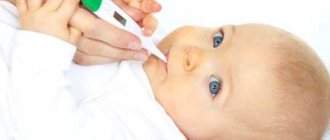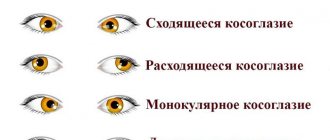The birth of a child is the most exciting period in the life of every woman. After childbirth, an equally important stage for both mother and her baby begins, the child’s adaptation stage, which lasts up to 1 month. All organs and systems of the newborn are rebuilt and begin to work in new conditions. After a sterile environment, the baby enters the outside world, where the skin is affected by a lot of irritants. We will look at the main transitional conditions of a newborn's skin, and every mother will be able to recognize these changes in her baby and distinguish normality from pathology.
Erythema toxicum
Erythema toxicum is red spots up to 10 mm in diameter with a yellow thickening in the center that appear on different parts of the body. It occurs at the end of the 1st week of the baby’s life and is associated with the colonization of the skin by the mother’s microflora.
In rare cases, blisters with transparent contents may appear on bright red skin. Most often they are located in the area of the joints of the upper and lower extremities. It is important to ensure that the skin is as clean as possible and not to open the blisters so that they do not fester.
Normally, toxic erythema goes away in 2–3 days. If you observe the rash for a long time (more than 2 weeks) or inflammation of the rash elements, it is important to consult a doctor and begin treatment.
Types and symptoms
This pathology can be of several types. Moreover, erythema in a child varies in its external manifestations, symptoms and causes of capillary dilation.
There are two groups:
- physiological;
- pathological
And if physiological erythema develops against the background of emotional outbursts, when exposed to the skin, or when taking drugs that dilate blood vessels, then with pathological erythema everything is much more complicated. The main types of this anomaly belong specifically to this group.
Ring-shaped
Ring-shaped erythema in children is also called persistent erythema. It is characterized by the formation of spots on the skin that have a ring shape. Clearer and brighter edges, a pinkish center - this is what ring-shaped erythema looks like in children.
The main locations of formation are shoulders, cheeks, torso. Redness of the same type often appears with a bacterial or viral disease, as well as with rheumatism. But there is a special form of ring erythema in children - Daria's erythema. It is caused by the appearance of pink spots that continue to grow. They can either peel off or not violate the integrity of the skin. The reasons for its appearance still remain unknown. Often such ring-shaped erythema appears suddenly in children. Moreover, its development can also stop abruptly. Literally in a couple of hours.
But what are the causes of ring erythema in children of this type? It could be:
- heredity;
- as an accompanying factor in tonsillitis, cholecystitis, chronic sinusitis;
- as an external manifestation of diseases of the gastrointestinal tract and even tumors.
Most often, ring erythema in children is chronic. It can get worse at certain intervals.
Other causes of ring erythema in children are extremely rare. But still they are not excluded. Therefore, at the first symptoms, you should make an appointment with a specialist.
Exudative multiform (polymorphic)
Exudative erythema in children is characterized by the appearance of redness on the skin and mucous membranes of the mouth, nose, and throat. The rash primarily appears on the arms and legs, namely the hands and feet. Erythema multiforme in children can appear on the inside of the elbows, soles of the feet, forearms and shins. It often appears in almost all locations of the body.
Exudative erythema in children is a convex, rich pink rash, which is distinguished by the presence of clearly defined edges. At first, the papules are small in size (about 2-3 mm in diameter), but then they begin to actively grow, reaching 3 cm in diameter. Due to the presence of a small pit in the center of the papule, it appears slightly bluish.
Erythema multiforme in children may be accompanied by a watery rash. It is for this reason that this type of disease got its name.
The symptoms observed are as follows:
- high body temperature;
- intoxication of the body;
- body aches;
- general serious condition.
Exudative erythema multiforme most often appears in children after:
- past infectious diseases (staphylococcus, herpes);
- taking certain medications that cause such a reaction (sulfonamides, drugs containing tetracycline);
- vaccinations against diphtheria, tetanus and whooping cough.
With exudative erythema multiforme in children, the rash appears on the 4th day after the first symptoms appear. Inflammation may persist for 7-14 days.
Toxic
Toxic erythema in children belongs to the group of allergic redness. Mostly newborn children are susceptible to it (and about 70% of children in infancy suffer from the manifestation of this disease). This is a definite consequence of the young organism’s adaptation to new living conditions in the environment. It is divided into physiological and pathological.
The physiological type of erythema makes itself felt on the second or third day of the child’s life. Does not require treatment. It goes away on its own. Complete disappearance of spots is observed after 10 days of a child’s life.
But the pathological type of toxic erythema in children manifests itself as certain reactions of the body to various allergens. They can be contained in food (with artificial feeding), medicines and substances that come into contact with the baby’s body and skin. This can be both body care products and other cosmetics, as well as household chemicals.
The integrity of the skin is not compromised, and its visual appearance does not change much. Minor redness appears on the cheeks, chin, buttocks, abdomen and thighs and feels slightly hot to the touch. These redness are reddish solid and compacted spots. Gray-yellow bubbles and nodules may form inside them. But this does not happen immediately, but after some time. But it is precisely this manifestation that increases the risk of infection of the body. A bacterial infection can occur quite easily.
Practice shows that this type of erythema appears more often in boys.
Infectious
Erythema infectiosum in children begins as ARVI. But the first symptoms indicate that it is necessary to show the child to a pediatrician or immediately to an allergist.
These include:
- increased body temperature (reaches 38 degrees);
- runny nose;
- sneezing;
- general weakness and malaise;
- itching in the nose;
- chills;
- sore throat;
- pain in muscles and joints.
Erythema infectiosum in children is characterized by typical symptoms of various viral infections. More often the disease makes itself felt in children aged 2 to 15 years. The causative agent of viral erythema in children is parvovirus B19-DNA virus. It is transmitted through household contact or airborne droplets.
Acute symptoms of erythema infectiosum in children are observed for 2-3 days, after which bright red rashes appear on the cheeks. They may completely disappear after 2-5 days. They can return if there was noticeable exposure to stressful situations or ultraviolet rays.
Erythema infectiosum of Chamera
This erythema infectiosum in children is a typical disease. There is no elevated body temperature. Redness appears on the cheeks. In their outlines, in the shortest possible time they begin to resemble the wings of a butterfly. Many children develop erythema infectiosum without symptoms. It appears suddenly, but just as suddenly it goes away. Moreover, information that a person has been ill becomes known much later - when the B19 antibody is detected in the blood. But it should be noted that immunity is developed for life.
This infectious erythema in children is one of the most harmless, without serious consequences.
Nodular (nodular)
Erythema nodosum in children has characteristic visual manifestations - specific nodules on the skin. Note that they are not formed on the surface of the dermis, but in its deeper layers. Erythema nodosum in children often develops against the background of tuberculosis, as well as due to certain diseases:
- streptococcal infection;
- infectious mononucleosis.
Taking sulfa drugs may also affect the development of erythema nodosum in children. Moreover, the main reasons for this reaction have not been precisely established. The bulk of studies conducted tend to suggest that a banal allergic reaction is to blame for the formation of erythema nodosum in children. But we are talking about a reaction to certain waste products of certain bacteria (for example, streptococcus).
Speaking about the causes of erythema nodosum in a child, we should highlight bacterial otitis media, scarlet fever and streptococcal tonsillitis.
The rash is accompanied by inflammatory processes. More often they occur in the gastrointestinal tract. Often the cause of erythema nodosum in a child can be cancer. Therefore, at the first symptoms and the appearance of a rash, be sure to contact your doctor. He will prescribe the necessary tests and give referrals to other specialists.
You should pay attention to the affected areas of the body. With erythema nodosum in children, dense and deep pronounced nodules are noticeable. In size they can range from 2 mm to 5 cm in diameter. Moreover, a large number of formations differ in different sizes. This means that they are all different.
Erythema nodosum in children requires immediate treatment, as complications are possible.
Milia in newborns
Milia are white dots with a diameter of up to 0.5–2 mm on the wings of the nose, bridge of the nose and forehead.
They appear when the sebaceous ducts are blocked. Stagnation of the secretion of the sebaceous glands is observed in 70% of newborns. Milia does not require treatment; normally, the ducts of the sebaceous glands open within 1-2 weeks after birth - just wipe the baby’s face with a swab moistened with clean, warm water. Children with abundant spots on the face may develop seborrhea. In some cases, inflammation of the sebaceous glands occurs. This is due to the increased activity of maternal sex hormones. In case of inflammation, milia are treated with local antiseptics.
Telangiectasia, or “stork mark”
Telangiectasias are pink spots up to 10 mm in diameter on the back of the head, forehead and bridge of the nose. They are found in the place where “storks carry babies,” which explains their popular name “stork’s trail.” Telangiectasias lighten and decrease in size in the first 2 years of a child’s life and become noticeable only when the child is very restless.
When bright red capillaries become stronger, hemangiomas may appear on the skin. They need to be seen by an oncologist. Normally, they disappear or lighten up to 1 year. If the dynamics are negative, they are removed after 2 years.
Birth tumor
A birth tumor is a swelling of the presenting part; it appears in the place where the baby left the birth canal. The birth tumor is observed for 3–4 days and goes away without consequences.
After vacuum extraction, a hematoma may appear on the child’s head, which gradually decreases in size and resolves by the end of the first month of the baby’s life. This affects the increase in bilirubin in the blood. If the hematoma does not go away on its own, it is opened surgically.
Transient jaundice
Yellow coloration of the skin and sclera with physiological jaundice does not appear from birth, but on the 3-4th day, reaching a maximum on the 5-6th day. The physiological process of destruction of red blood cells and the release of indirect bilirubin from them, as well as the immaturity of the liver enzyme system, leads to the accumulation of indirect bilirubin in the blood and skin, giving the latter a jaundiced tint. Sometimes transient jaundice has a protracted course. In this case, it is necessary to observe a pediatrician with an examination to exclude pathological conditions.
Hormonal (sexual) crisis
From 2-4 days of a baby’s life, the mammary glands enlarge and swelling of the external genitalia appears (scrotum in boys, labia in girls). The sexual crisis reaches its maximum by the end of the week. Then it gradually goes away over the course of a month.
Enlargement of the mammary glands is usually symmetrical (up to 2 cm), the skin over them is not changed. On palpation of the gland, a grayish or whitish-milky discharge appears. Enlargement of the mammary glands is observed in 80% of girls and 50% of boys. It is important to maintain hygiene so that the gland does not become inflamed.
Swelling of the external genitalia is observed in almost all boys and girls. Normally, swelling goes away within 1.5 months. For prolonged swelling, it is important to consult a surgeon.
Physiological jaundice of newborns
On the 2-3rd day of a baby’s life, his skin and mucous membranes may acquire a yellowish tint. Jaundice is normally observed in 70% of newborns, and this is due to the fact that the liver is not yet working at full capacity, so bilirubin accumulates in the blood. Stool and urine retain their normal color.
Normally, jaundice disappears by 10-14 days of life and, if the child’s health remains satisfactory, does not require treatment. If the child is noticeably lethargic and passive, and jaundice appears on the first day of life, you should immediately contact your pediatrician, as this condition requires treatment.
Clinical manifestations
Rashes with toxic erythema look like red spots from 0.1 to 2 cm in diameter, which can merge with each other and be accompanied by slight swelling. In the center of the spot there may be a papule of dense yellowish consistency. Sometimes instead of papules, pustules with white contents are formed. Often, due to their external similarity, the rash is compared to a rash caused by hives or a mosquito bite.
The rash can be in the form of single elements, but it can also spread abundantly throughout the body. It does not occur on the palms and soles. More often it begins on the face and torso, then appears on the extremities. Individual elements can appear and disappear within a few hours. On average, the duration of the rash is 3-5 days. But sometimes toxic erythema lasts up to 10-14 days.
As a rule, the general condition of the baby is not affected when toxic erythema occurs. Sometimes, with a profuse rash, itching may occur and, as a result, the child may experience general anxiety.
Miliaria neonatal
A newborn has an immature heat exchange system, so when overheated, prickly heat quickly appears on the skin. These are many small red pimples, condensing in the area of the folds. Often they can become inflamed and turn into blisters with clear or purulent contents.
It is important to wash areas of skin with prickly heat with soap and water 2 times a day and leave them open. It is also important not to bundle up too much or overheat the room where the child is. In areas with heat rash, use special creams to prevent diaper rash. As a rule, these measures are enough for prickly heat to go away within 3 days.
Treatment, prevention
Toxic erythema has a benign course and does not require treatment: after some time, all its manifestations disappear without a trace. However, to avoid complications such as infection, it is necessary to pay special attention to skin hygiene:
- Give your baby air baths more often;
- change contaminated clothing promptly;
- do not allow the baby to overheat or hypothermia;
- do not rub your baby’s delicate skin with a towel after bathing;
- use special bathing products no more than 1-2 times a week;
- Avoid applying baby cosmetics (cream, milk, lotion, oil) to the area of the rash.
It is important to remember that erythema toxicum is not dangerous for the child and there is no reason to panic. It is not inherited and cannot be infected. However, consultation with a doctor if any rash appears, including those that completely coincide with the manifestations described above, is still necessary: only a neonatologist can clearly distinguish harmless toxic erythema from a dangerous infectious disease accompanied by a rash.
Therefore, if rashes appear, be sure to contact a neonatologist at the ISIDA clinic to receive comprehensive information about the baby’s health. Follow all the doctor’s recommendations, and the problem will soon disappear without complications.
Features of newborn skin care
After birth, the baby's skin experiences a number of conditions that affect its health. In order for the transition period to pass without complications, proper care from the first days of a child’s life is important.
This is possible with GOO.N diapers for newborns. All their parts are very soft and delicate, and the surface contains vitamin E. After the diaper is filled, the color of the indicator will change, which means it’s time to change it. All this will help protect the delicate skin of the newborn from diaper rash and prickly heat.
So, after birth, the baby begins a long journey of growth and development. During the period of a child’s adaptation to new living conditions, it is important to understand that the child’s skin goes through a number of stages. Normally, all manifestations on the skin disappear around the end of the baby’s first month of life. If a newborn has abnormalities in the condition of the skin, it is important to consult a doctor to clarify the diagnosis.









